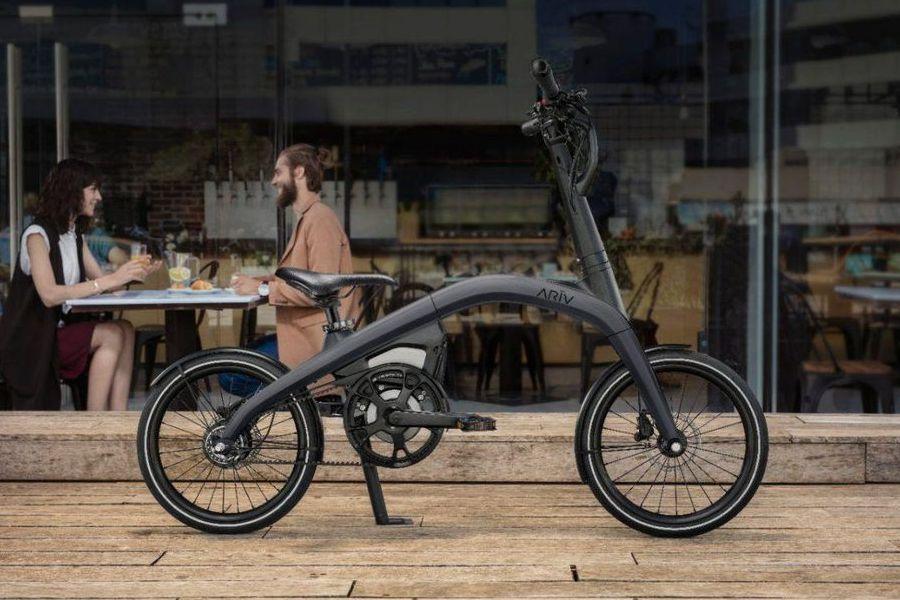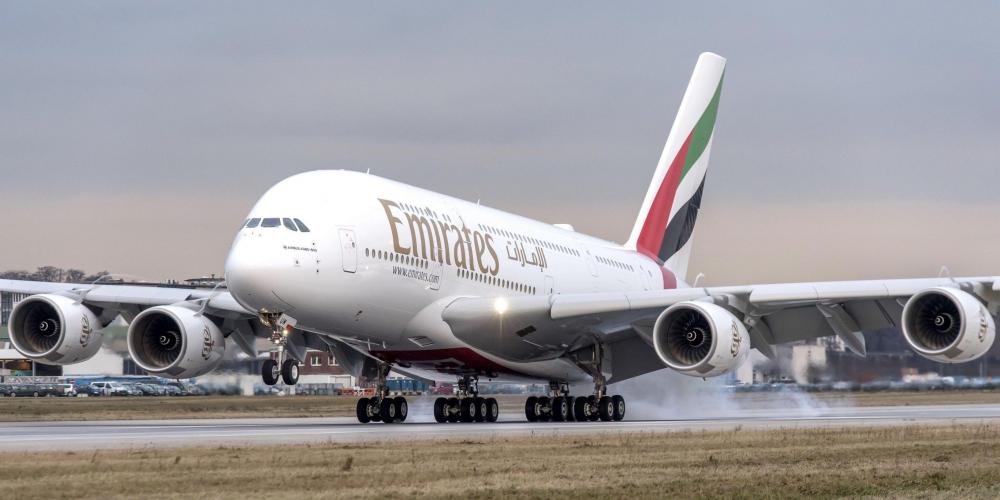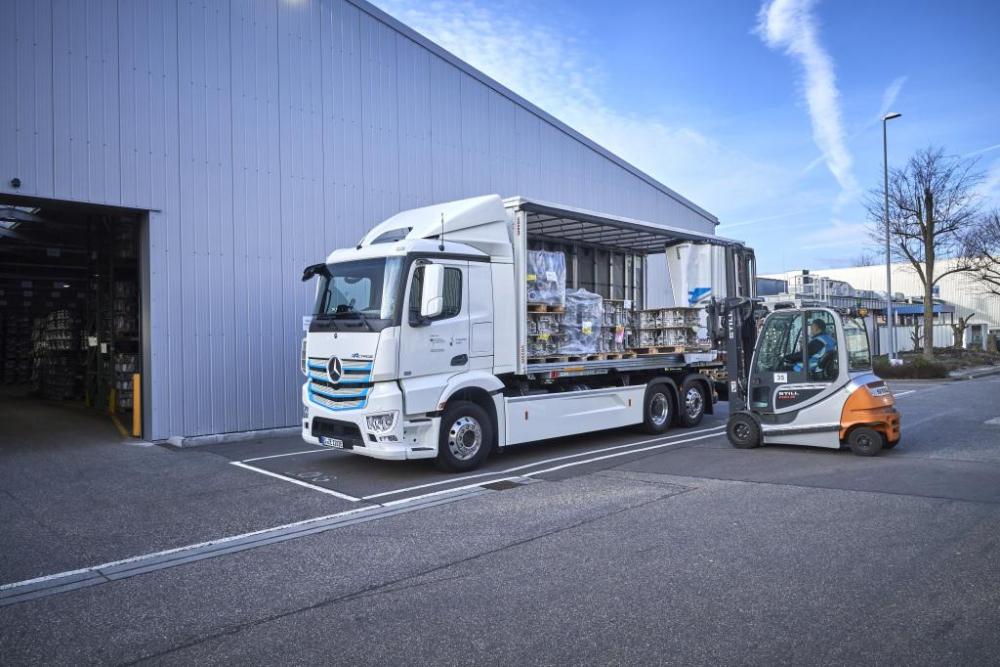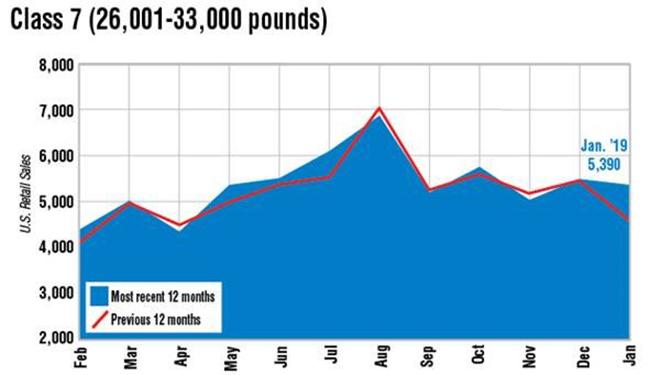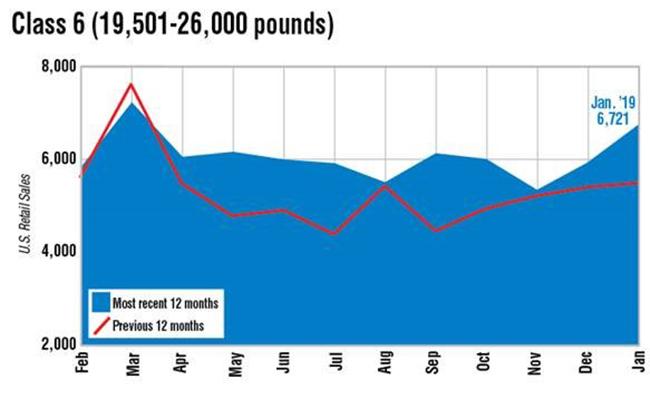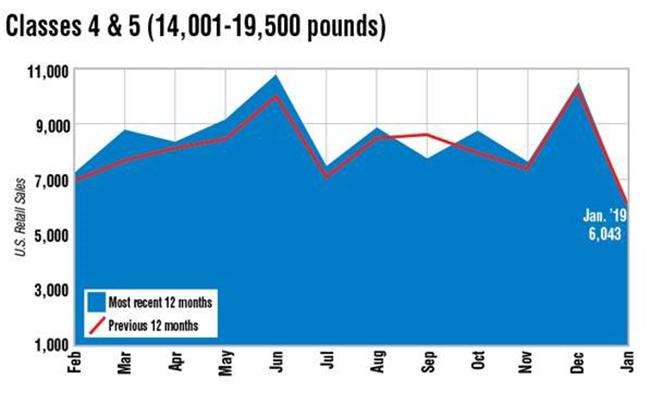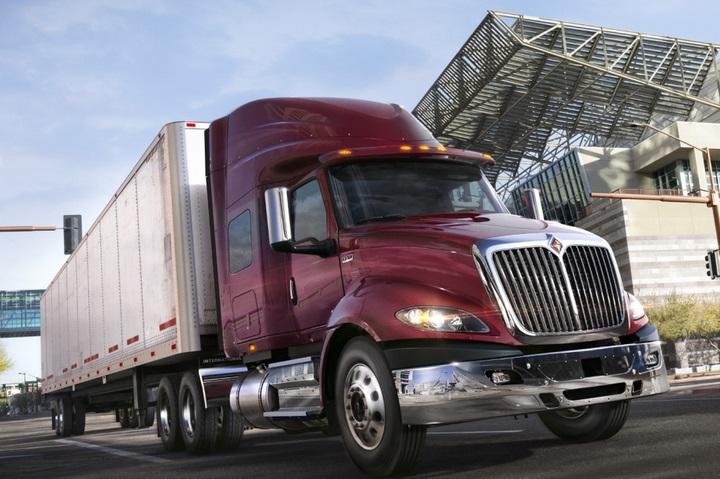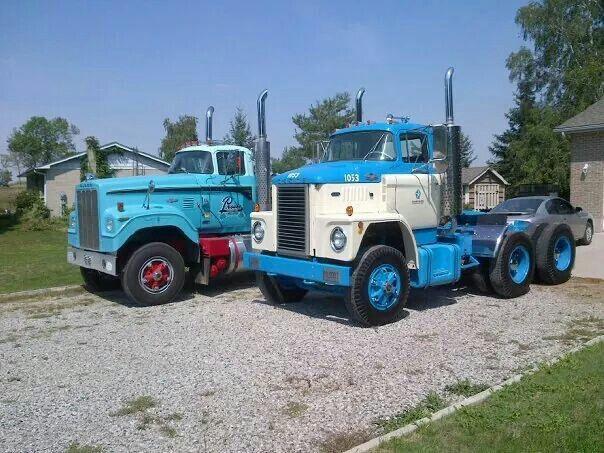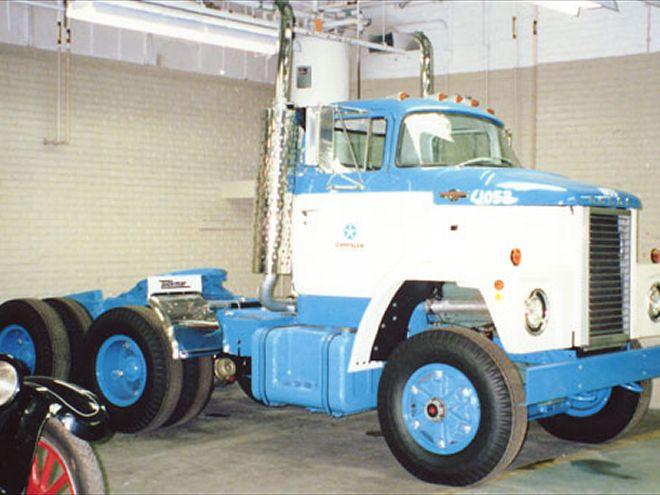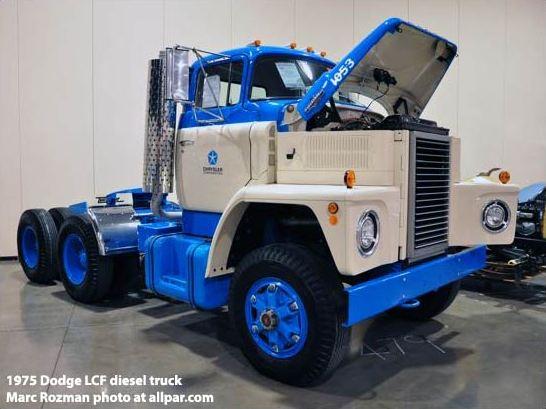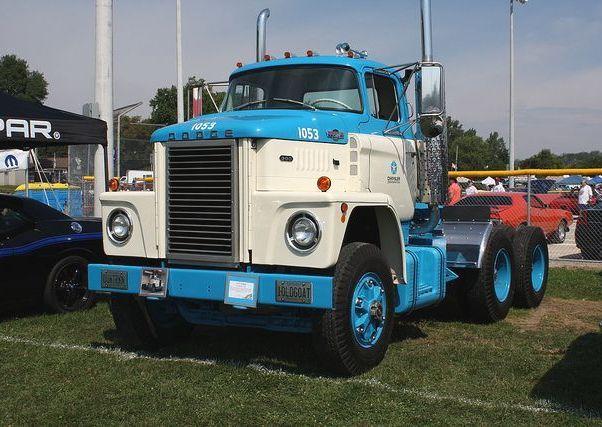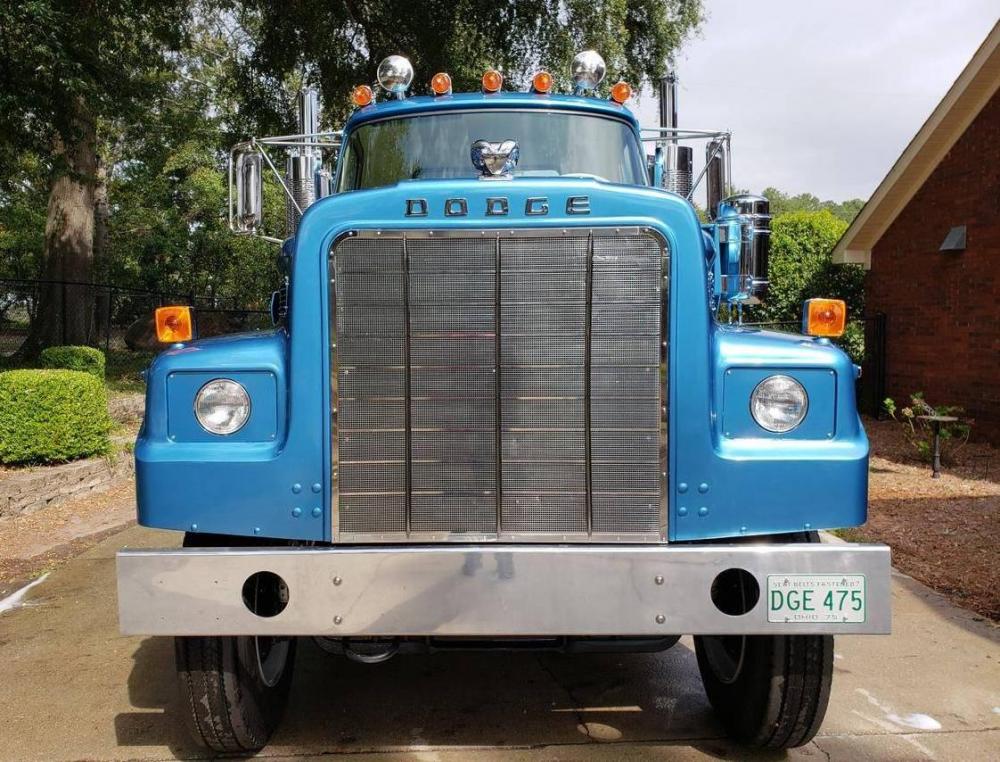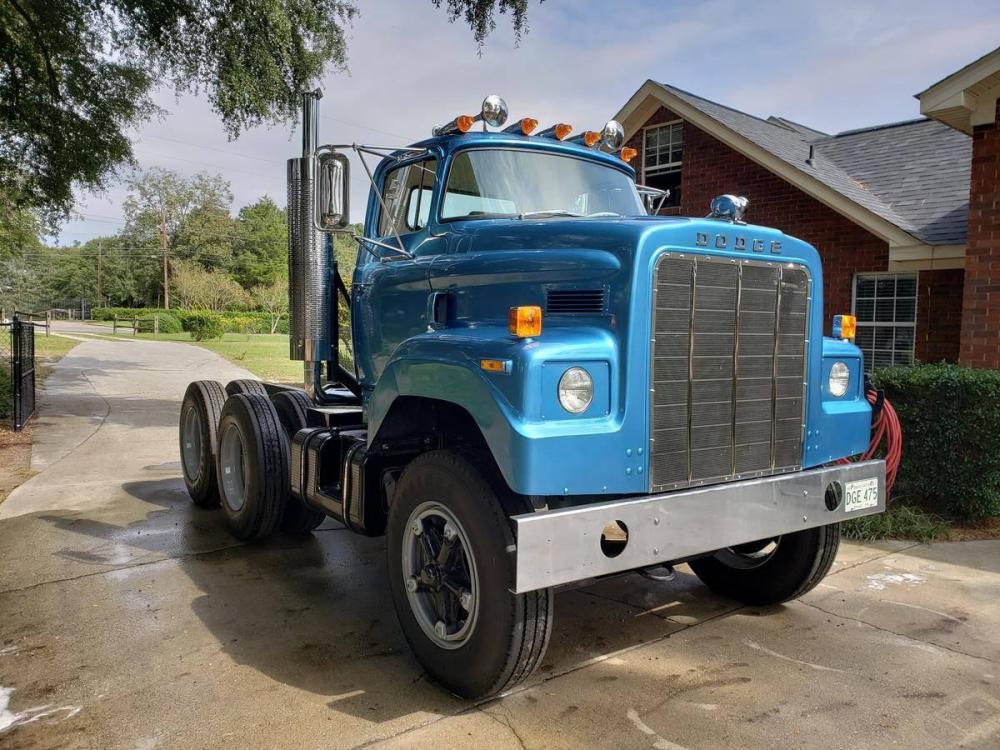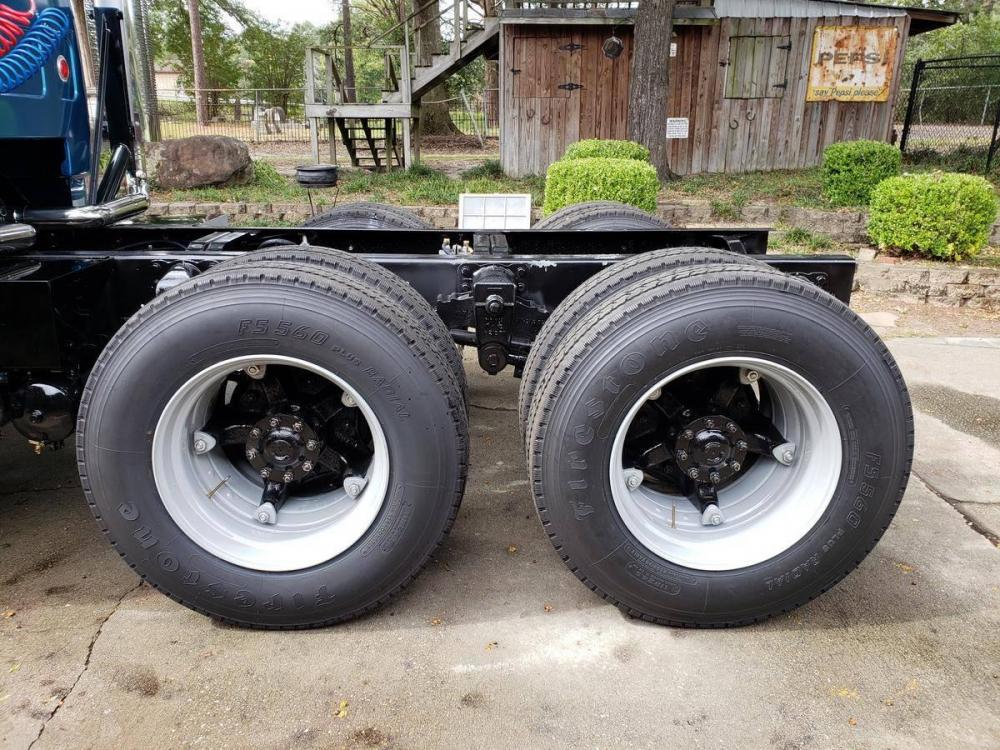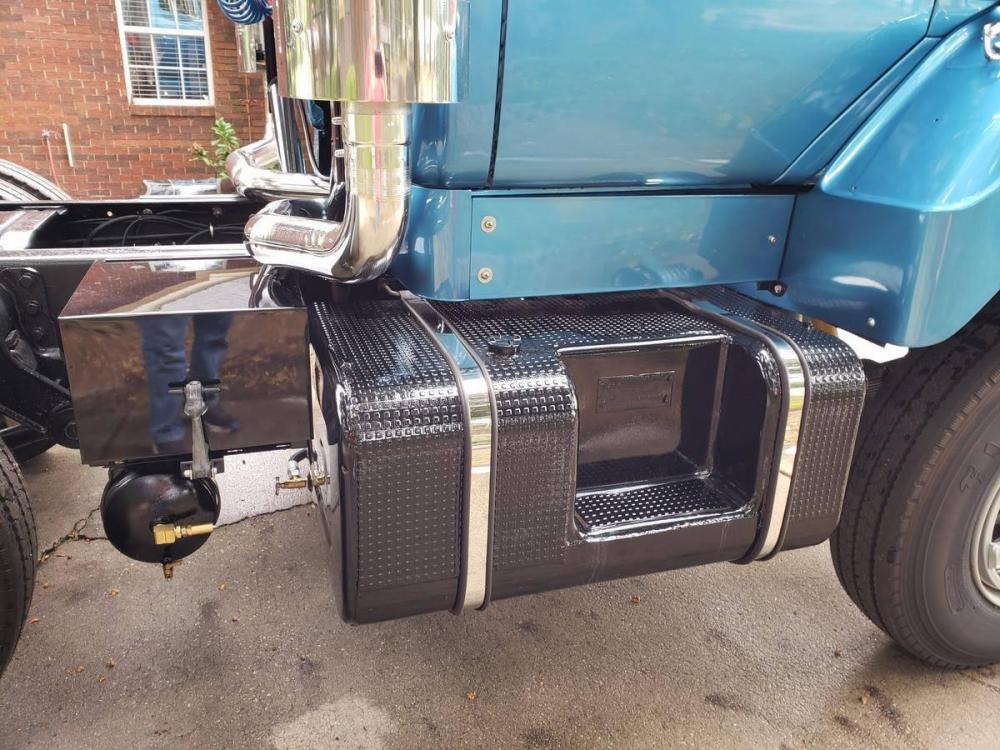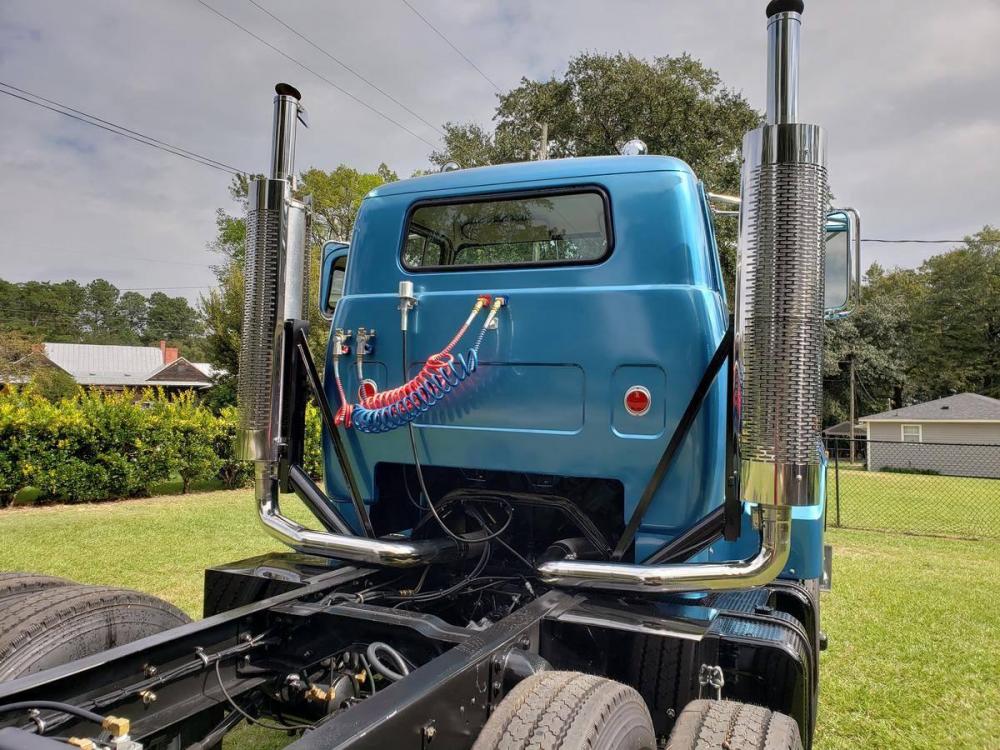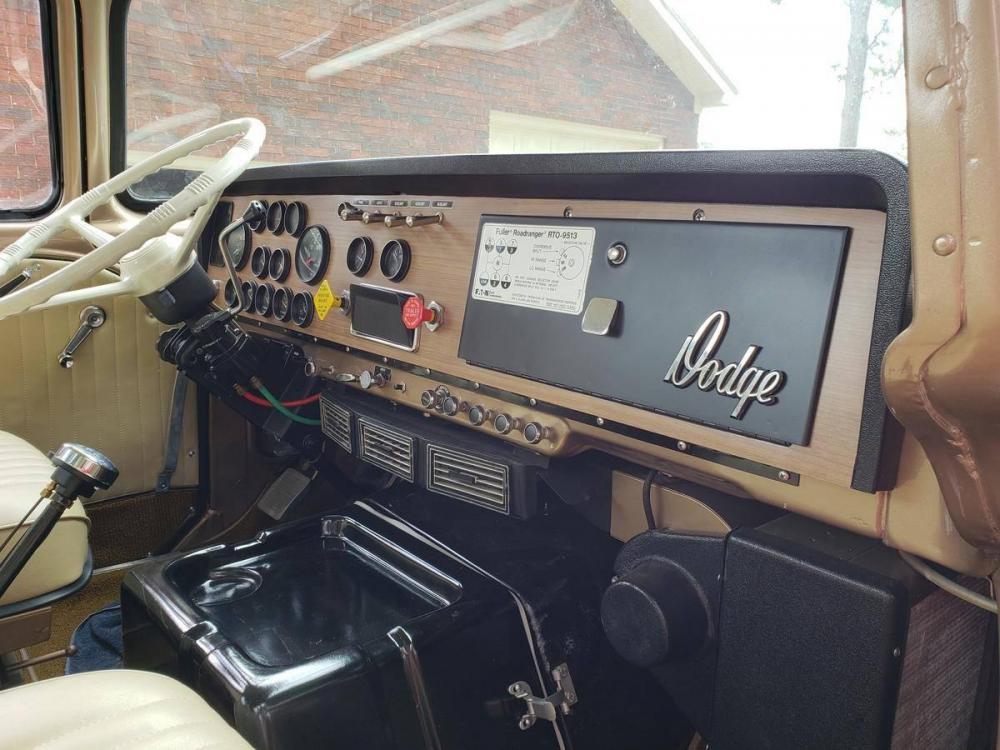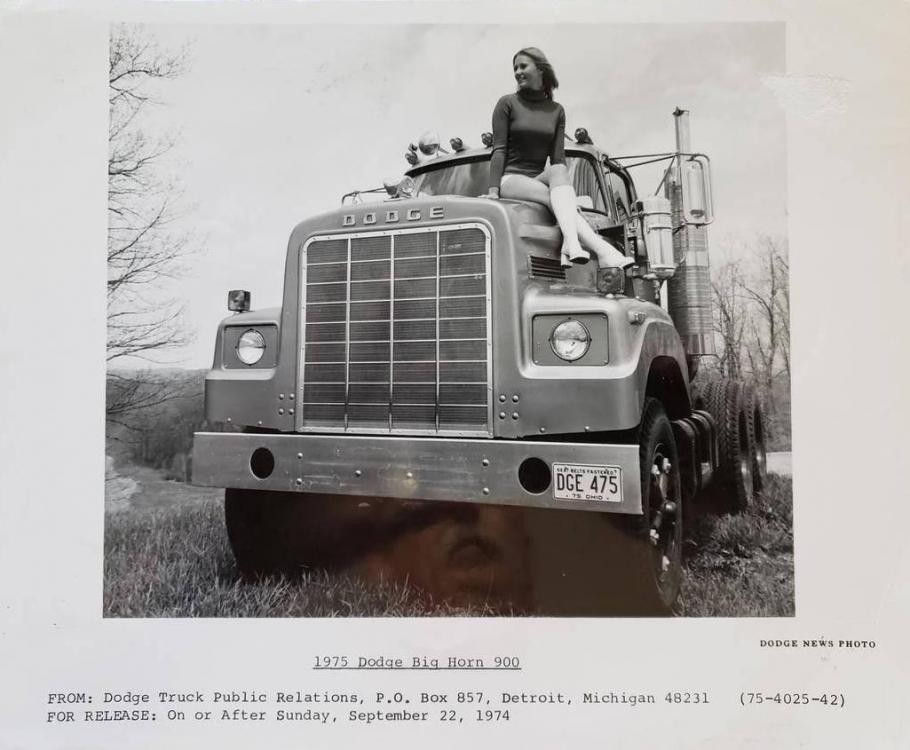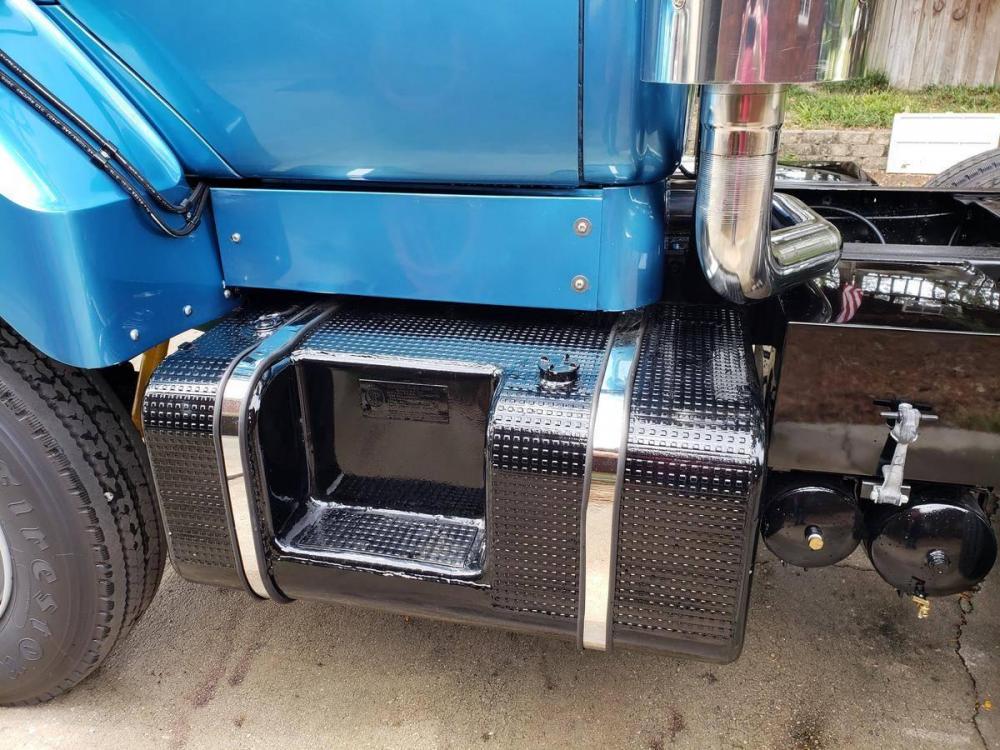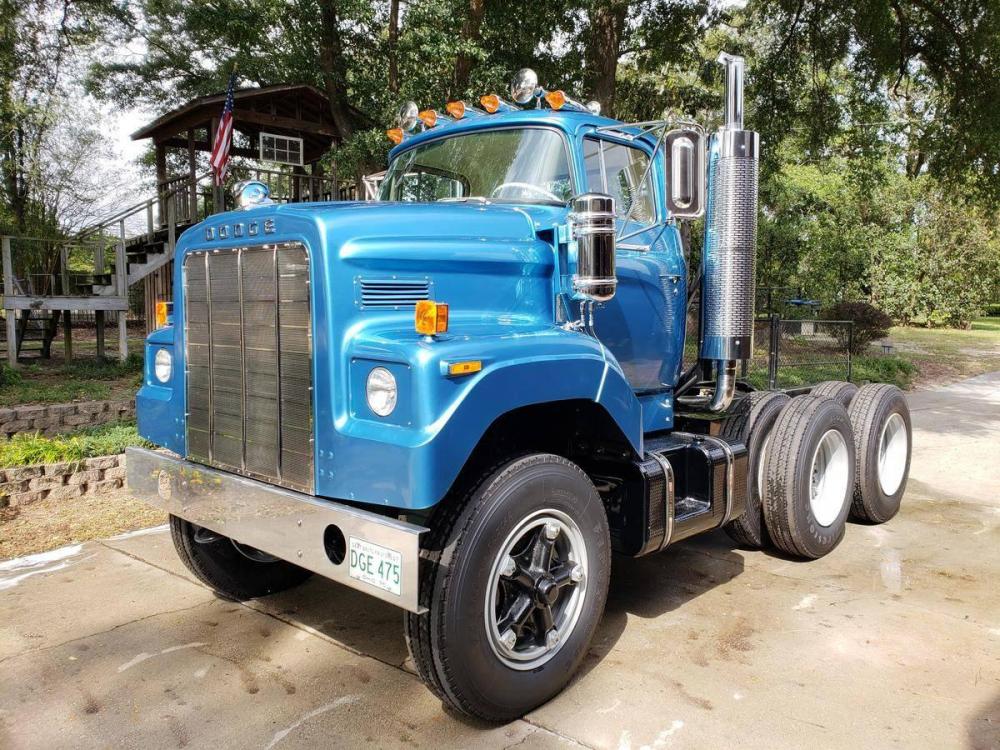
kscarbel2
Moderator-
Posts
18,546 -
Joined
-
Days Won
112
Content Type
Profiles
Forums
Gallery
Events
Blogs
BMT Wiki
Collections
Store
Everything posted by kscarbel2
-
Ford's groveling campaign has begun. .
-
The US government officially controlled the internet until 2016 (and some say still unofficially controls it). So, if you're another sovereign country, large or small, they feel the right and need to control the internet within their borders. There's some logic to their argument. Hey, personally, I wish we'd all get together for a group hug and get along.
-
Where is Mary Barra taking GM ?
-
GM will launch electric bike sales in Europe Reuters / February 14, 2019 General Motors said it will begin selling electric bicycles in Europe in the second quarter. Two such bicycles, a compact bike and a foldable one, will launch first in Germany, Belgium and the Netherlands, markets where cycles powered by lithium-ion batteries are already popular, GM said in a statement Thursday. In Belgium and the Netherlands the compact e-bike would cost 2,800 euros ($3,165), while the folding one would cost 3,400 euros. In Germany, the prices would be 2,750 euros and 3,350 euros, respectively. GM first announced its e-bike plans in early November. It already has a presence in the electric car market through its Chevrolet Bolt vehicles, which start at roughly $36,000. The bikes will be sold under a new brand called Ariv (pronounced arrive). Riders can charge their bike batteries in about three and a half hours and get up to 40 miles of ride time with a single charge. GM has not announced any plans in the e-scooter market. Meanwhile, its U.S. rival Ford Motor made a reported $200 million investment in November to acquire Spin, an electric scooter rental firm based in San Francisco. GM sold its European Opel/Vauxhall car business to Peugeot maker PSA Group in 2017. .
-
What was termed great, is no longer.....great. That said, I always enjoy flying on Emirates' A380s.
-
Airbus ends A380 production Tim Hepher, Reuters / February 14, 2019 TOULOUSE, France - Loved by passengers, feared by accountants, the world’s largest airliner has run out of runway after Airbus decided to close A380 production after 12 years in service due to weak sales. The decision to halt production of the A380 superjumbo is the final act in one of Europe’s greatest industrial adventures and reflects a dearth of orders by airline bosses unwilling to back Airbus’s vision of huge jets to combat airport congestion. Air traffic is growing at a near-record pace but this has mainly generated demand for twin-engined jets nimble enough to fly directly to where people want to travel, rather than bulky four-engined jets forcing passengers to change at hub airports. And while loyal supporters like top customer Emirates say the popular 544-seat jet makes money when full, each unsold seat potentially burns a hole in airline finances because of the fuel needed to keep the huge double-decker structure aloft. “It’s an aircraft that frightens airline CFOs; the risk of failing to sell so many seats is just too high,” said a senior aerospace industry source familiar with the program. Airlines had initially rushed to place orders, expecting it to lower operating costs and boost profits as the industry crawled out of a slowdown in tourism since September 2001. Airbus boasted it would sell 700-750 A380s, which nowadays cost $446 million at list prices, and render the 747 obsolete. In fact, A380 orders barely crossed the 300 threshold and the 747 has outlived its rival, after reaching the age of 50 this week. The seeds of the A380’s fall from grace were already present behind the scenes of the 2005 launch party. Despite public talk of unity, the huge task was about to expose fractures in Franco-German co-operation that sparked an industrial meltdown. When the delayed jet finally reached the market in 2007, the global financial crisis was starting to bite. Scale and opulence were no longer wanted. Sales slowed. At the same time, engine makers who had promised Airbus a decade of unbeatable efficiencies with their new superjumbo engines were fine-tuning even more efficient designs for the next generation of dual-engined planes, competing with the A380. Finally, a restless Airbus board started demanding a return and stronger prices just when the plane desperately needed an aggressive relaunch and fresh investment. Despite its own deep industrial problems, Boeing was winning the argument with its newest jet, the 787 Dreamliner. It was designed to bypass hubs served by the A380 and open routes between secondary cities: a strategy known as “point to point”. Airbus fought back, arguing that travel between megacities would nonetheless dominate air transport. But economic growth would splinter in ways Airbus did not predict. Intermediary cities are growing almost twice as fast as megacities. That’s a boon for twinjets like the Boeing 787 and 777 or Airbus’s own A350, which has outsold the A380 three to one. Airbus Chief Executive Tom Enders, who was rarely seen as an enthusiastic backer of the A380, toyed with ending the project about two years ago but was persuaded to give it a last chance. But with Emirates unable to hammer out an engine deal needed to confirm its most recent A380 order, time had finally run out. . .
-
Daimler Press Release / February 14, 2019 Field tests of the 25-tonne eActros from spring 2019 onward with logistics company Logistik Schmitt between Ötigheim and Rastatt Daily tours of approx. 168 kilometres in 3-shift operations Next step: comparative tests of the eActros as a semitrailer tractor unit with higher tonnage and range and the eWayBW catenary project Already ongoing customer testing of the eActros continues in parallel – in total over 30,000 electrically driven kilometres so far Stefan Buchner, Head of Mercedes-Benz Trucks: "There is every indication that we are on the right track with our eActros concept. We are delighted that Logistik Schmitt will now use the eActros and are excited about further interesting findings gained from practical operations." Gaggenau / Stuttgart – With the fully electric eActros truck, Mercedes-Benz Trucks demonstrates that it is already possible today to complete heavy distribution tasks locally emission-free and quietly in the Murg valley in Southern Germany. The official handover of the eActros to regionally based logistics company Logistik Schmitt took place today on occasion of Daimler Trucks’ annual press conference held at the Unimog-Museum in Gaggenau. As part of the eWayBW project, commercial transport will be electric on the B462 federal road around Rastatt with the test operation of catenary trucks as of 2020. Whilst preparations for the construction of the necessary infrastructure are still ongoing, the eActros is mobile with its battery-electric drive, fully flexible and in need of only minimal infrastructure; nothing more than a charging station. From spring of this year, Logistik Schmitt will be operating the eActros in place of a conventional diesel truck as part of a field test transporting transmission housings. The eActros will be tested on an around 7 kilometres stretch in a demanding three-shift system between Logistik Schmitt’s warehouse in Ötigheim and Rastatt's Mercedes-Benz Gaggenau plant. The daily tour of the 25-tonne truck totals around 168 kilometres. This represents the kick-off to a series of eActros field tests taking place over several years in the Murg valley and the surrounding region. As a next step, comparative tests with the catenary project will be carried out with an advanced version of the eActros as a semitrailer tractor variant with higher tonnage and range. Stefan Buchner, Head of Mercedes-Benz Trucks: “Our eActros has been out on public roads since June 2018 and has already covered more than 30,000 kilometres with its battery-electric drive. Together with customers, we have been compiling experiences of the eActros in regular everyday operations since September. Its range of 200 kilometres has proved to be absolutely realistic. The eActros completes its transportation tasks regardless of the route or other factors. The expenses involved in installing one charging station at each customer's premises is comparatively low. There is every indication that we are on the right track with our eActros concept. Our aim as of 2021 is to have locally emission-free and quiet heavy-duty series production trucks operating in cities – operating economically on a par with diesel trucks.” “We are delighted that Logistik Schmitt will now use the eActros and are excited about further interesting findings gained from practical operations”, Buchner continues. First phase: practical test on the commuter route from Ötigheim to Rastatt Rainer Schmitt, Executive Partner of Logistik Schmitt: “In view of new challenges in the logistics business, we consistently have a look at the latest innovations – if we recognise potential in them. The approach which Mercedes-Benz Trucks has taken with the eActros has impressed us across the board. In testing the eActros, we are happy to contribute towards making the transport business of the future more ecological and sustainable. The commuter route from Ötigheim to Rastatt is ideally suited for this undertaking. We can thus put the eActros through its paces in difficult three-shift operations – under continuous stress. The eActros drives along precisely the same route as a conventional diesel-powered Actros which it is intended to replace. This provides an excellent opportunity for comparison.” In the first phase of the eActros test operation, Logistik Schmitt is integrating a vehicle with a swap body into the company fleet. The eActros transports up to twelve tonnes and drives twelve tours a day. The batteries in the eActros are charged also whilst the vehicle is being loaded or unloaded so that the total 200-kilometre range of the eActros can be optimally used. Initially the vehicle will be charged using a mobile charging station. Second phase: parallel testing with the catenary truck As of the second phase of the eActros project in the Murg valley, the 25-tonne truck from the first phase will be replaced by an advanced version of the electric truck in form of a semitrailer tractor unit. Using the eActros semitrailer, Logistik Schmitt will deliver axle components along the 14 kilometres from the warehouse in Ötigheim to the Mercedes-Benz Gaggenau plant – mainly via the B462. This route is, for the most part, the same as that for the catenary project. The specifications of the eActros semitrailer truck will be comparable to those of the overhead catenary trucks, among other things in terms of the higher tonnage and range. This parallel testing of the eActros and the catenary trucks will take place for approximately one year and will deliver the most important data and findings necessary for comparing both concepts, e.g. in what way the vehicles are suitable for this operation. Third phase: direct comparison with the overhead catenary truck During the third phase of the project, which is expected to take place within the second phase, the eActros semitrailer truck will travel the exact catenary truck route for approximately one to two weeks so that a direct comparison can be made. This will serve to validate the second phase. During this direct comparison, the eActros will transport rolls of paper the 18 kilometres from the paper mills in Gernsbach-Obertsrot to the Fahrner logistics site in Kuppenheim – just like the trucks involved in the overhead-lines project. Conventional diesel Actros as a starting point for the concept comparison A conventional diesel Actros equipped to the Euro VI emissions standard and fitted with measuring equipment will serve as a neutral starting point for the comparison of the concepts and will drive along the overhead-lines route. It will then be possible to compare the energy consumption of the electric trucks – battery-electric and catenary – with the consumption of the diesel truck. Currently no plans for catenary trucks at Daimler As a global manufacturer, Daimler is working on future-oriented solutions that have great potential for worldwide implementation. Due to the high infrastructure costs involved, the company does not see potential in overhead lines at present – also in view of the rapid development of battery and fuel cell technology. About eWayBW eWayBW is a pilot project for the research of hybrid trucks electrically driven with the help of overhead power lines. On the test route on the B462 between Kuppenheim and Gernsbach-Obertsrot three sections will be electrified with overhead power lines. The specially equipped trucks can draw electric current from the overhead power lines. At the same time, a battery is charged which provides energy for further travel once the truck no longer has contact with the overhead power lines. The operation of such hybrid catenary trucks will be examined during a three-year pilot phase. The project is accompanied by scientific research. Planning, approval and construction of the pilot route will cost 17.6 million euros (source: www.ewaybw.de). About the operational eActros "innovation fleet" The so-called eActros "innovation fleet" started in September 2018. A total of 20 customers are using the eActros as a near-series-production 18 or 25 tonne truck. The customers drive the eActros in routine operations, testing its suitability for daily use. All test customers operate in short-radius distribution and use the eActros for tasks, which would otherwise be carried out by conventional diesel vehicles. The customers cover a broad spectrum of different sectors and categories and use a range of body types. The test series can be broken down into two phases, each with ten customers and spanning a total of around two years. The development and testing of the heavy-duty electric truck in short-radius distribution operations is sponsored as part of the "Concept ELV²" project to varying degrees by the German Federal Ministry for the Environment (BMUB) and the Federal Ministry for Economic Affairs and Energy (BMWi). The eActros: architecture based entirely on electric drive The eActros is based on the frame of the Mercedes-Benz Actros. Beyond that, the eActros uses an architecture based entirely on electric drive with a large proportion of specific parts. The drive comes from two electric motors near the wheel hubs on the rear axle. Their output is 126 kW each, and the maximum torque is 485 Nm each. Downstream of the transmission that equates to 11,000 Nm each. The driving output is therefore on a level with a diesel truck. The maximal permitted axle load is the usual 11.5 tonnes. The energy is stored in lithium-ion batteries with a capacity of 240 kWh. Depending on the available charging capacity, a full charge takes between two and eleven hours (at 150 or 20 kW respectively). Daimler commercial vehicles with an extensive electric portfolio Daimler has had experience of working with electric trucks since 2010 and its first fully electric series production truck has been on the market and used by customers since 2017: the light-duty Fuso eCanter truck. At the end of 2018, Daimler Trucks handed over the first medium-duty truck, a Freightliner eM2 to a customer and thus began practical tests in the USA for heavy and medium-duty electric trucks. The eCascadia for heavy-duty distribution is also to be tested. In the bus sector, delivery of the first Mercedes-Benz eCitaro took place at the end of the last year and the buses are in test operation with real customers. The Thomas Built Buses brand is launching the eC2 (also known as Jouley) in a small series. The first vehicles will be handed over to customers in 2019. With regard to vans, the Mercedes-Benz Vans eVito recently became available and has already been delivered to its first customers. In the second half of 2019 the eSprinter will follow. The vehicles from Daimler Trucks, Daimler Buses and Mercedes-Benz Vans will thus cover the entire range of urban traffic with electric vehicles. .
-
Daimler Press Release / February 14, 2019 The Daimler Trucks umbrella encompasses five strong truck brands, offering pioneering technologies and tailor-made products for disparate applications all over the world. .
-
Volvo Group shows Mack Granite-based M917A3 Dump Truck at AUSA 2018
kscarbel2 replied to kscarbel2's topic in Trucking News
Meritor Announces Complete Drivetrain Solution for Mack Defense's M917A3 Heavy Dump Truck for U.S. Army Meritor Press Release / February 14, 2019 TROY, Michigan -- Meritor today announced it has been selected to equip Mack Defense's new heavy-duty dump trucks for the United States Army with a comprehensive drivetrain solution from Meritor including its MX810 front drive steer axle, transfer case, ProTec™ Series 50 tridem drive beam axles and Permalube™ RPL Series drivelines. The Mack Granite® armored and armor-capable dump trucks are scheduled to be delivered to the U.S. Army Corps of Engineers through 2025. "With this solution, Mack and Meritor have taken steps to ensure that our soldiers can execute their missions with confidence," said David Damian, director, Defense for Meritor. "Our axles and related components are widely applicable to multiple military applications." Meritor's complete drivetrain solution for the Mack dump truck includes: MX810 front axle with weight rating up to 24,000 pounds offers maneuverability and excellent ground clearance MTC-3220FV high-torque transfer case is compact and rugged for ease of maintenance and serviceability while remaining durable enough for the demands of military applications ProTec Series 50 beam axles, engineered to military specifications with gross axle weight rating (GAWR) up to 30,000 pounds per axle Permalube RPL Series drivelines, designed for gear-fast/run-slow drivetrains and high-torque applications that are permanently lubricated and sealed for life to reduce maintenance compared to conventional drivelines "Our drivetrain solution for this vehicle meets military requirements for performance, mobility, durability and weight-efficiency," Damian said. "These proven technologies are available to defense organizations and companies that develop and supply armored tactical and combat vehicles or platforms in multiple configurations." Mack Defense, LLC, is part of the Volvo Group, one of the world's leading manufacturers of trucks, buses, construction equipment and marine and industrial engines. The Group also provides complete solutions for financing and service. The Volvo Group, which employs almost 100,000 people, has production facilities in 18 countries and sells its products in more than 190 markets. In 2018 the Volvo Group's sales amounted to about $43 billion. The Volvo Group is a publicly-held company headquartered in Gothenburg, Sweden. Volvo shares are listed on Nasdaq Stockholm. For more information, please visit www.volvogroup.com. -
Detroit Press Release / February 8, 2019 Find out why distributorship Flagg Inc relies on Freightliner M2 106 trucks with DD5 engines to help make their business successful. .
-
Cummins Press Release / February 13, 2019 What is Cummins Integrated Power? A portfolio of powertrain solutions, across a variety of fuel options, Cummins Integrated Power represents your power of choice. With key technologies expertly paired, you’ll get a fully integrated powertrain optimized for your operations. Learn more: https://www.cummins.com/integrated-power .
-
New to me engine configuration
kscarbel2 replied to james j neiweem's topic in Engine and Transmission
Speaking of VW, after 51 years of use, VW completely rebuilt a woman's Beetle. . -
New to me engine configuration
kscarbel2 replied to james j neiweem's topic in Engine and Transmission
-
Fanuc is a solid Japanese robotics manufacturer. They had a JV with GE but it ended in 2009. So no Bob, there's no connection between Kuga and Fanuc. And yes, after acquiring Kuga, most Chinese manufacturing is sourcing Kuga, rather than Fanuc or other. An exception is the Japanese automakers in China who spec Fanuc.
-
Don't put Putin and Vlad in the same sentence. I read Putin is unhappy with Vlad after he broke up with the defense spokeswoman he personally appointed, Rossiyana Markovskaya. .
-
Transport Topics / February 13, 2019 Sales of medium-duty trucks had a strong start in 2019, climbing above 18,000 units in January, WardsAuto.com reported. Sales rose 11.7% to 18,154 compared with 16,246 a year earlier, according to Ward’s. As the year began, Cummins Inc. CEO Tom Linebarger forecast North American production of medium-duty trucks would reach 134,000 units, up 2% from a year earlier. “Our market share is projected to be in the range of 74% to 76%,” Linebarger said during a recent conference call. Class 7 sales in January climbed 17.7% to 5,390 compared with 4,578 a year earlier. The truck makers with the most sales drove the year-over-year gain. Freightliner led with 2,683, an increase of 350 from the 2018 period. International Truck jumped 314 units to 1,344. Ford nearly doubled its sales with 341, up from 173. Class 6 sales jumped 21.8% to 6,721 compared with 5,518 units a year earlier. International had the lion’s share of the gains as it nearly doubled sales — to 2,533 from 1,335 in the 2018 period. Sales in Classes 4-5 slipped 1.7% to 6,043 from 6,150 a year earlier. Meanwhile, Dodge Ram announced its 2019 Ram Chassis Cab models will come in Classes 3-5 and will be available in the second quarter. They are built at the Satillo Truck Assembly Plant in Coahuila, Mexico. “Commercial trucks are important to the entire industry, but specifically for a truck brand like Ram it’s very important. They can represent as much as 25% to 30% of our sales. We’ve focused on capability with this new Chassis Cab. We looked at payload, gross vehicle weight and trailer-towing. Those things were all important to our customers,” said Dave Sowers, the head of Ram commercial vehicle marketing. Upgrades and features include the new Cummins 6.7-liter I-6 diesel engine, active safety systems, cargo-view camera, Park Assist, and a trailer tire pressure monitoring system for up to six truck tires and 12 trailer tires with up to four trailer profiles. .
-
Heavy Duty Trucking (HDT) / February 13, 2019 International Truck is now offering the Bendix Wingman Fusion collision mitigation technology as standard equipment across its entire lineup of on-highway tractors, including the International LoneStar, LT Series and RH Series trucks. Bendix Wingman Fusion integrates radar, camera and the vehicle’s brake system into a driver assistance system that delivers driver alerts and interventions to help drivers mitigate rear-end collision, rollovers and loss-of-control situations. Wingman Fusion combines and cross-checks information from a suite of sensors to assesses situations faster and reacts earlier, while also helping to reduce false alerts and false interventions. By creating a highly detailed and accurate data picture, Bendix Wingman Fusion delivers enhanced rear-end collision mitigation, and adaptive cruise control, along with following distance alerts, stationary object alerts, lane departure warning, alerts when speeding, and braking on stationary vehicles – all while prioritizing alerts to help reduce driver distraction. Event-based data – including video – can be wirelessly transmitted for driver coaching and analysis by fleet safety personnel. Other options include blind spot detection that helps drivers address vehicles in their blind spots that may not be visible in their mirrors. The forward-facing camera of Wingman Fusion is powered by the Mobileye System-on-Chip EyeQ processor with state-of-the-art vision algorithms. “As part of our DriverFirst philosophy, we concentrate on consistently improving the overall driver experience, specifically safety,” said Jim Nachtman, director, heavy-duty, Marketing, International Truck. “Partnering with Bendix to make Fusion standard on all of International Truck’s heavy-duty vehicles makes for an important joint contribution to make North American roadways safer for everyone.” Since 2015, International Truck has offered the technology as an option for all on-highway models. Bendix Wingman Fusion is also available as an option on International’s medium-duty lineup, including the International MV Series, HV Series, HX Series and CV Series trucks.
-
Peterbilt to launch Model 567 Heritage edition in September
kscarbel2 replied to kscarbel2's topic in Trucking News
-
All in all, I still think the 567 "Heritage" is a decent looking truck. https://www.bigmacktrucks.com/topic/45657-peterbilt-to-launch-model-567-heritage-edition-in-september/?tab=comments#comment-336547
-
The 1975 CNT900 on the right, originally part of Chrysler's fleet, was in the Walter P. Chrysler museum until it closed in December 2012. It was sold at auction. .
-
-
Edward Lampert’s Plan for Sears: Smaller Stores, Less Apparel The Wall Street Journal / February 13, 2019 Edward Lampert, who steered Sears into bankruptcy and kept it alive with a $5.2 billion offer for its assets, says he will sell or sublease some of the 425 remaining stores, devote extra space to tools and appliances, and open more smaller stores. Edward Lampert has a plan for Sears after its trip through bankruptcy: smaller stores and less apparel. The hedge-fund manager, who steered Sears into bankruptcy and kept it alive with a $5.2 billion offer for its assets, says he will sell or sublease some of the 425 remaining stores. He plans to devote more of the retail space to tools and appliances. He also wants to open more smaller stores, similar to one in Oak Brook, Ill., which at 62,000 square feet is about one-third its original size. “Our goal is to continue to shrink the size of our stores,” Mr. Lampert said in his first interview since his rescue plan was approved by the bankruptcy court this week. “If I had my druthers, I’d rather be bigger than smaller. We still have enough of a critical mass.” The restructured company, which doesn’t yet have a new corporate name, will be composed of 223 Sears stores and 202 Kmart locations, as well as the Kenmore and DieHard brands. Sears sold its Craftsman brand to Stanley Black & Decker in 2017 but retains a license to sell products under the name. Mr. Lampert said he would remain the company’s chairman but would hire a new CEO to carry out his vision. The billionaire, who rescued Kmart from bankruptcy and merged it with Sears in 2005, had served as chief executive since 2013, but he relinquished that role when the company filed for bankruptcy in October. The shrunken Sears will compete against bigger retailers such as Home Depot Inc., Lowe’s Co s., Best Buy Co. and Amazon.com Inc. After closing hundreds of stores in recent years, it will lack the economies of scale and negotiating clout with suppliers that the larger players wield. “They have already been category-killed by the big box chains,” said Burt Flickinger, managing director of consulting firm Strategic Resource Group. He said Mr. Lampert’s idea of focusing on so-called hard lines was a good one, but is a decade too late. “They have lost the confidence of the vendor community,” he continued. “Sears and Kmart prices are no longer competitive.” Once the largest seller of major appliances in the U.S., Sears has fallen to fourth place, behind Lowe’s, Home Depot and Best Buy, according to research firm TraQline. But it still commands a 12.9% share of the market, which has $36 billion in annual sales, giving it a position from which to rebuild. With J.C. Penney Co. recently announcing it would no longer sell appliances, Sears has one less competitor in the mall. “They have a shot, but it’s a long shot,” said Craig Johnson, president of consulting firm Customer Growth Partners. “Most of the profits on appliances are made on the servicing side, and Sears still has a good service business.” In addition to the retail stores and brands, the restructured company includes Sears Auto Centers, Sears Home Services and logistics company Innovel Solutions Inc., which operates 11 warehouses, a fleet of trucks and specializes in delivering appliances. One challenge is that appliances are purchased far less frequently than apparel, giving shoppers fewer reasons to visit a store or website on a regular basis. Mr. Lampert’s answer is his company’s Shop Your Way loyalty program. Points can be earned not just at Sears and Kmart, but also at partner companies, including Ulta Beauty and Uber. “Shop Your Way has always been our answer for how we’re going to be more relevant,” Mr. Lampert said. During a court hearing last week, a lawyer for the creditors’ committee questioned the Shop Your Way program, noting it has consistently missed expectations. A Sears executive acknowledged that targets had been missed, but said the program would be a cornerstone of the company going forward. Mr. Lampert said Sears didn’t need to win over new customers, and could survive by doing more business with existing shoppers, something other retailers have echoed by launching loyalty programs that reward their best customers. The Sears chairman said he hoped to win back suppliers now that the company was in better financial health. “We have a clean balance sheet,” he said, referring to the roughly $4 billion of debt and pension obligations that were eliminated through the bankruptcy process, including $1.3 billion that was owed to Mr. Lampert’s hedge fund. “We hope suppliers take a more constructive approach.” Mr. Lampert said Sears didn’t always get credit for its innovations such as introducing curbside pickup and equipping its sales staff with iPads before it became fashionable to do so. “We did things before others,” he said. “The problem is they didn’t end up mattering enough. Whether we didn’t do it well enough or we ran out of time, or we didn’t market it enough. It wasn’t the ideas, it was making them matter and turning them into profit.” Although Mr. Lampert is buying the best Sears and Kmart locations, not all of them are profitable. “It would be very difficult to keep all 425 stores open,” he said. “We would like to maintain a presence in at least the stores that we’re in. That may be in a different location in the mall, if we were to sell the store, or sell and lease back part of the store.” In addition, Mr. Lampert is buying a number of stores that have already closed. He said those locations would probably not reopen and would likely be sold. He said a lot depends on the mall owners. “The mall owners are very influential,” Mr. Lampert said. “They were not rooting for the company to emerge from bankruptcy.” The restructured company is controlled by Mr. Lampert, but he doesn’t want Sears to stay a private company indefinitely. “Being private has certain advantages of being able to do things that public investors wouldn’t endorse,” he said, adding that must be balanced against the opportunity to raise capital as a public company. “If I am a betting person, which I am, I would say at some point we would be public again,” Mr. Lampert said.
-
It's noteworthy that Ford's Australian and European-designed vehicles don't have the wide range of "issues" that Dearborn vehicles do.
BigMackTrucks.com
BigMackTrucks.com is a support forum for antique, classic and modern Mack Trucks! The forum is owned and maintained by Watt's Truck Center, Inc. an independent, full service Mack dealer. The forums are not affiliated with Mack Trucks, Inc.
Our Vendors and Advertisers
Thank you for your support!




